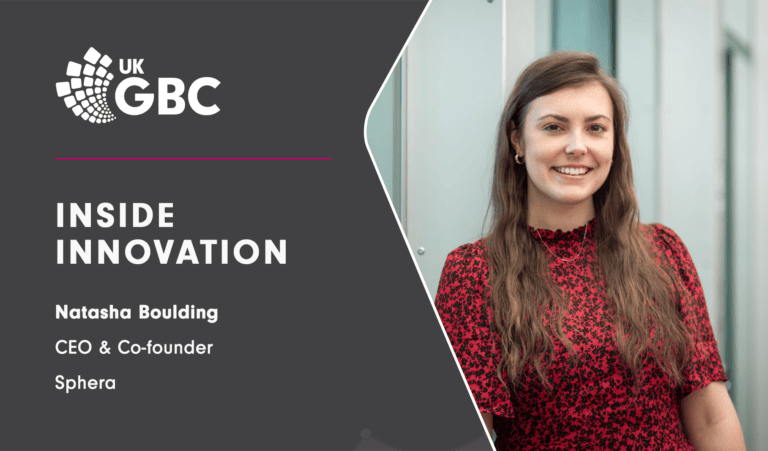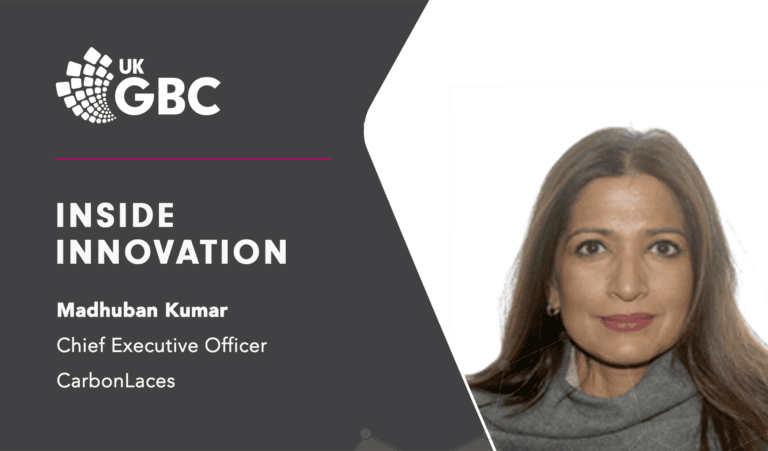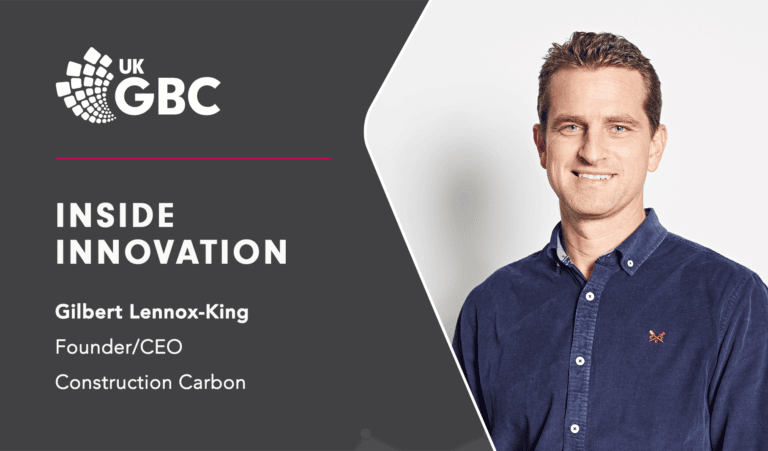Low Carbon Materials (LCM)

What is your elevator pitch?
Low Carbon Materials develops product-based solutions for the building materials sector – with no compromise to our planet.
We concentrate on developing materials for the construction sector to specifically reduce embodied carbon. There has been a lot of innovation to reduce operational carbon, but we are now seeing a push to tackle the embodied carbon of construction materials.
We have developed, OSTO™, a low carbon lightweight aggregate for use in concrete. OSTO™ is currently being trialed in concrete blockwork and will be available to the market this year. When used in blocks, OSTO™ makes medium-dense concrete blocks – traditionally a carbon intensive product – become carbon zero (no net emissions). The blocks will be used for residential and commercial builds. Visually the blocks look identical to any other block, but they are more thermal insulating.
OSTO™ incorporates plastic waste – that can’t be recycled. A lot of waste is burnt, which releases vast volumes of greenhouse gas into the atmosphere. We have to stop burning for energy – coal, natural gas and oil, and also surprisingly our waste. We should think about how to meaningfully repurpose it – waste for one industry, can add value to a completely different industry.
We are a team of disruptive innovators, where the vision for Low Carbon Materials is to become a world-leader in low-carbon, environmentally friendly building materials.
How did your start-up get to where it is today?
I am a scientist and have spent a lot of my career so far in academia. I did a chemistry master’s degree at the University of Warwick which included some time spent at Nanyang University in Singapore, this was then followed by a materials chemistry PhD at Durham University. So, I am a scientist through and through, I was completely new to the built environment and construction sector. I think that is probably one of our team’s strengths – looking at the sector from the outside with a naïve and fresh point of view is sometimes powerful.
I met my fellow co-founders during my PhD, where we realised we wanted to work on projects that had immediate and substantial impact (I don’t think a 9-5 was ever going to work for us!). Concrete is one of the most used materials globally, so we asked, can we innovate, using our expertise, within that sector to have positive impact?
From that point, we took part in business incubators and accelerators to grow the business – learning from as many people as possible. We have been supported in our journey by Innovate UK, BEIS EEF, Tech Nation, WSP’s Emerging Growth Partnership Program, Creative Destruction Lab, Cambridge Institute for Sustainability Leadership, Durham University and Northern Accelerator.
The Innovate UK Women in Innovation Award was definitely one to note as it submerged me into a cohort of woman innovators who all help each other out, as well as Innovate UK support.
What does innovation mean to you?
I really like the saying, ‘the problem doesn’t know if you are a scientist, engineer or designer’, so as many interdisciplinary minds you can get together to work on something, the better the solution will be!
I think an innovative mindset is important – asking lots of questions and not being afraid to be wrong and being open to working with someone who thinks entirely different to you.
How hungry is the built environment for innovation?
I think it is a really exciting sector to be in right now. It is renowned for being quite traditional and slow moving, however, the sector is realising they are going to have change and embrace innovation.
What needs to change to help encourage more innovation?
More collaboration – between start-ups, start-ups and corporates.
Shorter timescales and faster decisions from corporate partners.
We collaborate with a few larger organisations and as a start-up we can make decisions very quickly, but large organisations often can’t. If there was some way the collaboration between big corporations and start-ups could be accelerated and strengthened, I think it would really help innovation.
What are the biggest challenges you have faced as a start-up?
Our biggest hurdles have probably been collaboration timescales and product/market fit.
We find that initial contact with a company and starting a partnership is fairly straightforward, especially if your product solves one of their challenges. It is the ongoing timeliness of the responses that is probably our biggest hurdle.
What’s your advice for new innovators and start-ups in the built environment?
Continually ask questions of your potential customers and the entire supply chain – be annoying (within reason!). Always be on the lookout for feedback to develop your product/service understanding exactly what the end users want
What’s next for your company?
Taking OSTO™ to market and seeing the blocks produced with it, in the ‘real world’. We are collaborating with a variety of companies across the construction supply chain from architects to contractors. We are doing a lot of hiring and moving to a larger facility in the next few months! We have opportunities currently open in many of our business areas and we are going to shortly be moving to a larger facility (we are currently based in a 5,000sqft facility and moving to a 12,000sqft premises!) to scale-up.
We are looking to collaborate with anyone interested in using OSTO™ aggregate and/or our carbon zero blocks – and reducing the embodied carbon of their products/projects. This could be residential or commercial builds – pretty much anyone that uses concrete blockwork. We are also developing other innovative products for the sector and would welcome introductions to people within the concrete precast and MMC sectors.
Our main goal is to become an innovation partner for the construction industry. This is achieved by our on-going development of new products and improving on our existing products.
Related
CarbonLaces: Interview with CEO, Madhuban Hubar

Inside Innovation: Construction Carbon

Inside Innovation: R8 Technologies

Inside Innovation: Etopia

